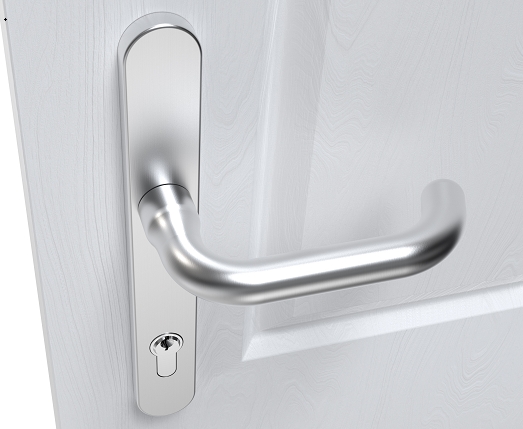Summer Sees Oil Rubbed Bronze Delight
Steel Window Fittings has launched the 1080 and 1090 door levers in a variety of finishes including oil rubbed bronze to delight Art Deco fans this...
Read Full Article
It’s part of my job to advise Mila Hardware on new standards and regulations so that we are always up to date with the latest requirements when designing new products, writes Strafford Cooke.
Yet even I sometimes struggle with determining what’s a legal requirement and what’s a recommendation which we don’t actually have to adhere to by law.
That was the situation a while ago when a customer asked Mila for a DDA compliant handle. Even though the 1995 Disability Discrimination Act was replaced by the Equality Act in England, Scotland and Wales in 2010 requiring public authorities and service providers to make accessible design adjustments, most people in this industry still refer to window and door hardware designed for the elderly or less able as ‘DDA handles’.
Future Homes
When I asked the customer what standard they thought referred to the requirement for a DDA handle, they mentioned Lifetime Homes but even though planning authorities still often refer to Lifetimes Homes when granting planning permission, that in itself was actually abolished in 2015 and is all set to be replaced with Future Homes in 2025.
Lifetime Homes was always an independent standard anyway, developed by a number of housing associations in the 1990s specifically for new homes. It included 16 design criteria to ensure homes had the flexibility to be adapted to meet the changing needs of individuals and families at different stages of their lives. It remains optional,but many of the elements of the Lifetime Homes standard have actually been incorporated into the latest version of building regulations approved cocument M (ADM).
Confusing
I couldn’t find any specific reference to door handle dimensional requirements in ADM. The only reference to handle design for accessible and inclusive furniture is BS8300, which, even though it applies primarily to non-dwellings, was referenced in the DDA – so effectively, I had done a complete circle.
BS8300 requires a lever which is easier for people with any weakness in their hands to manipulate and recommends a gap of 45mm between the handle and the face of the door and a visual contrast between the two.
Social housing
That got the team at Mila thinking, When we were developing our new ‘Supa Safety’ handle, we obviously had to take the requirements of BS8300 into account but the other key driver for the design team was to create a handle which we felt had the potential to become the standard option for fabricators working in social housing and public sector regardless of whether the installation was for the elderly or less able.
For those types of fabricators, having a standard handle on all their doors which complies with BS8300, DDA, Lifetime Homes and Doc M would not only simplify procurement and day to day fabrication by eliminating multiple stocking and fitting options, it could also potentially help them win new business.
Reassurance
As a result, the Mila Supa Safety handle is designed to look very similar to our mainstream Supa door handles so that it doesn’t shout DDA. It is also manufactured in our Supa durable stainless steel, which comes with a 25-year guarantee on the finish and the mechanical operation to give the fabricator, the installer and the housing provider reassurance that there will be no costly remedials down the line.
Environment
And we can provide independent analysis for public sector buyers of the sustainability of our stainless-steel hardware vs zinc helping them to achieve the carbon reduction targets which are increasingly part of their specification check lists.
Picture: The Mila Supa Safety handle
www.mila.co.uk/supasafetydoorhandle
Article written by Cathryn Ellis
28th March 2023